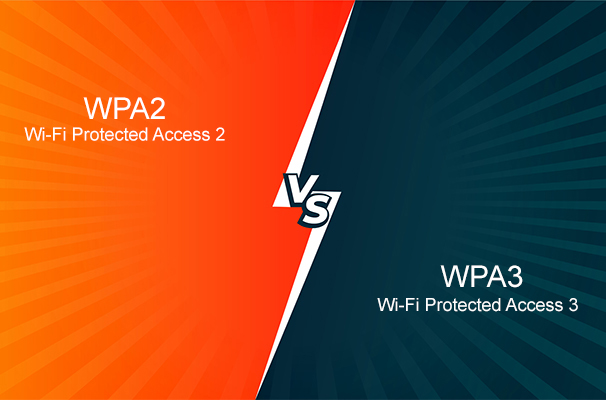When Apple launched its original AirPods in 2016, it revolutionized the wireless earbud market. With the subsequent release of AirPods 2 in 2019, many users found themselves wondering about the differences between the two models. This guide will help you understand the key distinctions and similarities between AirPods 1 and AirPods 2, allowing you to make an informed decision on which model suits your needs best.
Overview of AirPods 1
The first-generation AirPods introduced a wireless, intuitive listening experience that was a game-changer for Apple users. Here are some key features:
- Release Date: December 2016
- Chipset: W1 chip
- Battery Life: Up to 5 hours of listening time and 2 hours of talk time per charge, with more than 24 hours of battery life with the charging case.
- Connectivity: Bluetooth 4.2
- Design: Classic EarPod design with protruding stems
- Siri Activation: Double-tap to activate Siri
Overview of AirPods 2
The second-generation AirPods built upon the success of the originals, offering several upgrades while maintaining the same iconic design.
- Release Date: March 2019
- Chipset: H1 chip
- Battery Life: Up to 5 hours of listening time, and 3 hours of talk time per charge, with more than 24 hours of battery life with the charging case.
- Connectivity: Bluetooth 5.0
- Design: Same as AirPods 1
- Siri Activation: “Hey Siri” voice command
Key Differences Between AirPods 1 and AirPods 2
- Processor and Connectivity
- AirPods 1: Uses the W1 chip, and supports Bluetooth 4.2.
- AirPods 2: Equipped with the H1 chip, supports Bluetooth 5.0. This upgrade provides faster and more stable wireless connectivity, 30% lower latency, and improved battery efficiency. The H1 chip also enables the “Hey Siri” voice command feature.
- Battery Life
- AirPods 1: Up to 5 hours of listening time and 2 hours of talk time per charge.
- AirPods 2: Maintains up to 5 hours of listening time but extends talk time to 3 hours per charge, thanks to the efficiency of the H1 chip.
- Siri Activation
- AirPods 1: Activate Siri by double-tapping one of the earbuds.
- AirPods 2: Activate Siri hands-free using the “Hey Siri” command, adding convenience and improving usability.
- Wireless Charging
- AirPods 1: Does not support wireless charging unless you purchase the wireless charging case separately.
- AirPods 2: Available with an optional wireless charging case. This case is compatible with Qi-standard wireless chargers, making it more convenient to charge on the go.
- Audio Sharing and Switching
- AirPods 1: Limited to single-device connections.
- AirPods 2: Supports Audio Sharing and faster switching between Apple devices, enhancing the overall user experience for those within the Apple ecosystem.
- Performance and Latency
- AirPods 1: Higher latency, making it less ideal for gaming and other latency-sensitive applications.
- AirPods 2: 30% lower latency, better suited for gaming and applications where audio delay is noticeable.
- Talk Time and Battery Efficiency
- AirPods 1: 2 hours of talk time per charge.
- AirPods 2: 3 hours of talk time per charge, benefiting from the H1 chip’s improved power management.
Similarities Between AirPods 1 and AirPods 2
- Design and Aesthetics
- Both AirPods 1 and AirPods 2 share the same design and weight. They are visually identical, featuring the classic EarPod design with stems that protrude from the ears.
- Sound Quality
- Both models deliver a similar audio experience characterized by Apple’s signature sound profile, which is balanced and natural. While there are minor improvements in the second generation, the overall sound quality remains close between the two.
- Weight and Dimensions
- Both models have the same weight and dimensions, ensuring that users who find one comfortable will likely find the other equally so.
- Color Options
- Both AirPods 1 and AirPods 2 are available only in white, maintaining the sleek and minimalistic design Apple is known for.
Which Should You Choose?
If you already own the first-generation AirPods and are considering an upgrade, here are some factors to consider:
- Performance and Features: The H1 chip in AirPods 2 offers significant improvements in connectivity, latency, and battery efficiency. If you frequently use Siri or switch between multiple Apple devices, AirPods 2 will provide a smoother experience.
- Battery Life: With longer talk time and better battery management, AirPods 2 can be more convenient for extended use.
- Wireless Charging: If you value the convenience of wireless charging, the AirPods 2 with the wireless charging case might be worth the upgrade.
If you are buying AirPods for the first time:
- Budget: AirPods 1 can be found at a lower price if you don’t need the latest features. However, the improvements in AirPods 2 justify the slightly higher cost for most users, especially those invested in the Apple ecosystem.
- Future-Proofing: AirPods 2, with its better chipset and additional features, is a more future-proof choice, ensuring compatibility with upcoming software updates and Apple products.
Final Thoughts
Both AirPods 1 and AirPods 2 offer a seamless, wireless listening experience that integrates perfectly with Apple’s ecosystem. While they share many similarities, the advancements in the second-generation AirPods make them a compelling upgrade or first-time purchase. Understanding these differences will help you choose the model that best fits your needs and preferences.
Whether you prioritize better connectivity, longer talk time, or the convenience of hands-free Siri activation, AirPods 2 provides tangible benefits over the original model. However, if you find a good deal on AirPods 1 and are primarily using them for casual listening, they remain a solid option.
Make your choice based on your usage patterns, budget, and the features you value most. Both models uphold Apple’s high standards for quality and design, ensuring a satisfying experience regardless of which you choose.





